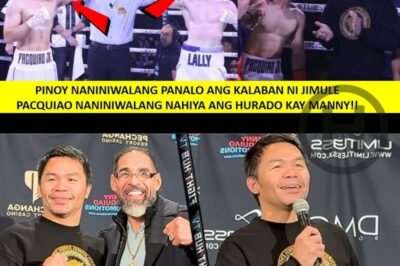“Silencing the Vulnerable Is Easier Than Silencing the Roosters”: What the Sabungero Disappearances Reveal About Power and Impunity in the Philippines
July 7, 2025
I. INTRODUCTION
In a country where cockfighting — or sabong — is not only a tradition but an industry, the disappearance of over 30 individuals tied to it has shaken the nation. These were not just hobbyists or gamblers; they were workers, handlers, managers, and middlemen who were allegedly “erased” in connection with the billion-peso e-sabong network.
But as the public watched the case unfold, a far darker truth came to light: the alarming ease with which people vanish without trace, and the silence that follows. Behind the feathers and betting slips lies a bigger narrative — one that speaks of unchecked power, silent complicity, and a justice system that struggles to find its voice when power speaks louder.
II. THE MYSTERY OF THE MISSING SABUNGEROS
Between 2021 and 2023, at least 34 men connected to cockfighting operations — some from Laguna, Manila, Bulacan, and Batangas — were reported missing under strange circumstances. Security footage showed vans pulling up outside arenas, men being ushered in, never to be seen again.
Despite CCTV evidence, identified vehicles, and even known locations of last sightings, progress in solving the case has been painfully slow. Families of the missing have begged for answers. Some have taken to social media, while others quietly grieve in private.
Authorities have detained several police officers, including 15 recently placed under restrictive custody, for suspected involvement. Yet, even as this internal probe unfolds, the masterminds remain unnamed or untouched.
III. WHAT THE CASE REVEALS
The public’s shock wasn’t just from the disappearances, but how quickly these lives could be removed from the public eye — and from existence — without consequence.
This case has quietly revealed:
The fragility of individual safety when up against wealth and power.
How networks of money, politics, and law enforcement may be intertwined.
A culture of impunity, where those with influence can allegedly override justice systems.
It’s not just about sabong anymore. It’s about how systems meant to protect people can instead protect those behind their disappearance.
IV. POWER AND SILENCE: A DANGEROUS COMBINATION
According to legal analysts and rights groups, the real concern is not just about what happened, but what didn’t happen:
No high-profile arrests, despite known links to gambling bosses and syndicates.
No full public investigation hearings.
No consistent government messaging.
This raises the haunting question: If these were ordinary men, what chance does anyone have when power decides they’re no longer useful?
V. THE HUMAN FACE OF THE LOSS
Behind every missing sabungero is a devastated family — wives waiting for messages, children asking where their fathers are, parents losing hope by the day.
One mother told reporters:
“They said he might have run away, but we know he didn’t. He would never leave his children like this.”
Another wife shared:
“He was just doing his job — he managed the birds. He didn’t even gamble.”
These aren’t just names on paper — they were breadwinners, friends, sons.
VI. A LEGAL SYSTEM TESTED
To date, the Department of Justice, the National Bureau of Investigation, and the Philippine National Police have all participated in various phases of the probe. But the lack of resolution has led to frustration.
Former law dean Atty. [Name] commented:
“What’s most troubling is the appearance that some lives can be made to disappear more easily than crimes can be solved. It weakens public trust in our institutions.”
Analysts say the longer this drags on, the more it creates precedent for inaction.
VII. WHO’S PROTECTED, WHO’S NOT?
The investigation has hovered around the names of influential businessmen and powerful insiders, including individuals tied to e-sabong operations. But despite public whispers and indirect connections, no criminal cases have been filed against these high-profile figures.
This has raised suspicion: are some individuals shielded by money or connections? Are there unspoken rules about who gets questioned and who doesn’t?
The phrase “accountability for the powerless, silence for the powerful” continues to trend on social media.
VIII. HOW DID THIS BECOME POSSIBLE?
Several factors seem to converge:
Digital gambling exploded in scale during the pandemic, creating high-stakes operations worth billions — often with little regulation.
Some enforcement units may have been compromised, as evidenced by officers placed under custody.
Fear rules over truth, as key witnesses go silent or disappear.
The case reveals how informal systems of power operate beneath formal structures — and how difficult it is to root them out once they take hold.
IX. MEDIA COVERAGE: SPEAKING OUT VS. STAYING SAFE

Mainstream media coverage has been cautious. While many outlets have reported on the surface-level facts, deeper investigative reporting has been limited. Journalists cite safety concerns, limited access to whistleblowers, and the risk of being “red-tagged” or harassed.
Meanwhile, alternative media and vloggers have tried to fill the gaps — but this has also led to misinformation, speculation, and sensationalism.
There remains a need for fact-based, courageous reporting that seeks truth without risking lives.
X. THE SABONG INDUSTRY: STILL THRIVING?
Despite the controversies, cockfighting continues across the country, with underground matches and online platforms still active. Though e-sabong was temporarily suspended in the past, many insiders believe operations have simply gone quieter — not disappeared.
Gambling watchdogs say the industry still moves millions daily, and enforcement remains lax.
As one insider shared (under anonymity):
“As long as money flows, people at the top will protect the machine.”
XI. INTERNATIONAL ATTENTION?
Human rights observers, both local and international, are beginning to take notice. The Commission on Human Rights (CHR) has expressed concerns, and some reports have been sent to international watchdogs for tracking possible enforced disappearances.
If no significant action is taken domestically, the case may soon attract pressure from global rights organizations.
XII. WHAT HAPPENS NOW?
The sabungero case stands at a crossroads. Either it becomes a turning point for accountability — or a footnote in a growing archive of impunity.
Families want one thing: answers. And if not justice, at the very least, the truth.
As the months stretch on, the silence becomes louder. The case becomes less about sabong and more about the state of justice in the Philippines today.
XIII. CONCLUSION: MORE THAN JUST A GAMBLE
This isn’t about cockfighting anymore. It’s about how easily the most vulnerable among us can vanish — and how hard it is to make the powerful answer for it.
The sabungero case, at its core, is not just a criminal investigation. It’s a reflection of a system that may punish the powerless swiftly but handles the powerful with caution.
If we cannot protect the ordinary — the handlers, the drivers, the small men in big games — who is next?
RELATED ARTICLES FOR FURTHER READING:
Restrictive Custody: 15 Police Officers Pulled Into Sabungero Probe
- — Philippine Daily Inquirer
Sabungeros Still Missing: A Timeline of Disappearances
- — Rappler
Impunity and Influence: How Big Money Impacts Criminal Investigations
- — Manila Bulletin
When Justice Stalls: The Psychology of the Unresolved
- — Philippine Star
The Role of E-Sabong in the Rise of Underground Gambling Networks
- — ABS-CBN News
News
Gerald Anderson Sets the Record Straight: Denies Rekindling Romance with Julia Barretto Amid Social Media Rumors (NH)
Gerald Anderson Sets the Record Straight: Denies Rekindling Romance with Julia Barretto Amid Social Media Rumors December 2, 2025…
Sibling Showdown: Eman Bacosa Faces Jimuel Pacquiao in an Epic Boxing Clash (NH)
Sibling Showdown: Eman Bacosa Faces Jimuel Pacquiao in an Epic Boxing Clash December 2, 2025 Introduction In the world of…
Jimuel Pacquiao Expected to Struggle Against Opponent, Says Disappointed Judge: Manny Pacquiao Feels Embarrassed (NH)
“Jimuel Pacquiao Expected to Struggle Against Opponent, Says Disappointed Judge: Manny Pacquiao Feels Embarrassed” December 1, 2025 Introduction The boxing…
Jinkee Pacquiao Drops Spicy Comment on Jillian Ward and Emman Bacosa Relationship: Social Media Ablaze (NH)
“Jinkee Pacquiao Drops Spicy Comment on Jillian Ward and Emman Bacosa Relationship: Social Media Ablaze” December 1, 2025 Introduction…
Netizen Regrets Handing Over Yu Menglong’s Clearest CCTV Footage to His Agency: Public Debate Erupts Online (NH)
“Netizen Regrets Handing Over Yu Menglong’s Clearest CCTV Footage to His Agency: Public Debate Erupts Online” December 1, 2025…
Sylvia Sanchez Nearly Melts with Joy at Zanjoe Marudo’s Heartwarming Gesture for Sabino’s Child (NH)
“Sylvia Sanchez Nearly Melts with Joy at Zanjoe Marudo’s Heartwarming Gesture for Sabino’s Child” December 1, 2025 Introduction In…
End of content
No more pages to load












